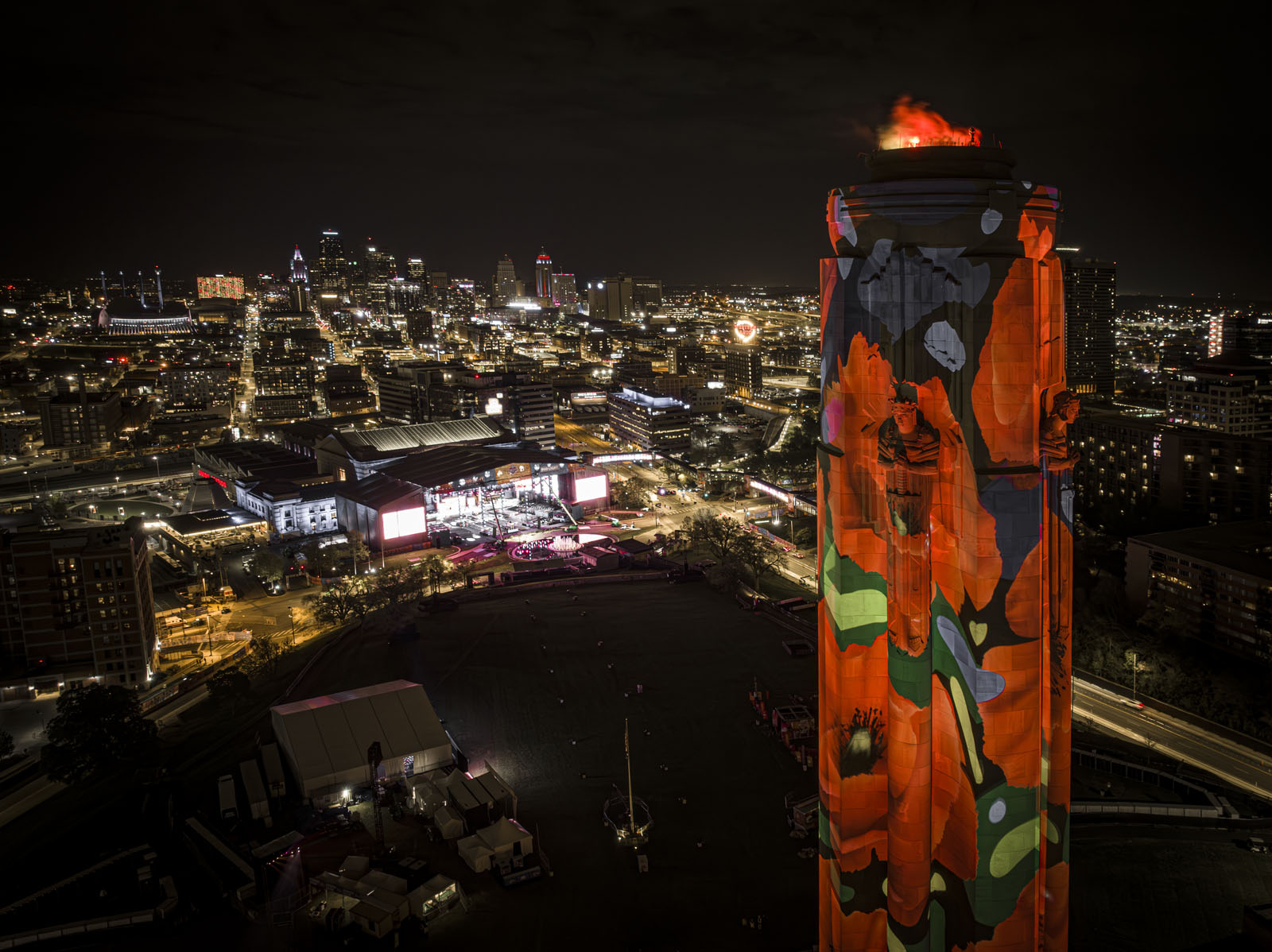The National WWI Museum and Memorial was proud to host a special ephemeral art installation, “Horizons”, on Liberty Memorial Tower and the North Terrace wall during April 25-29, 2023.
Using projection mapping technology, the Tower was illuminated over five nights in tribute to our nation's veterans. The installation was commissioned by the Museum and Memorial, and in conjunction with the NFL Draft. This was only the second time light projection has been used on the Liberty Memorial Tower; the previous occasion was to commemorate the 100-year anniversary of the Armistice in November 2018.



About the Installation
“Horizons” is inspired by the Museum and Memorial’s mission and is a natural poppy motif reimagined with a fluid, painterly look. A field of poppies is depicted on the lower half of the Tower, representing the sacrifice of those who have lost their lives on the battlefields – in WWI as well as other conflicts. The upper half of the Tower shows poppies floating over a blue horizon, representing the hopeful transition towards a more peaceful future.

Flanking the Great Frieze are silhouettes of soldiers on the march and standing at attention – ordinary experiences which hold special significance. These silhouettes were drawn from WWI-era photos in the Museum and Memorial’s permanent collection (object ID 2006.33.5.42 and object ID 2007.207.31).

The phrase “Lest We Forget” serves as a reminder to all the sacrifices made by those who have died to protect and defend our freedoms. (“Lest we forget” is often echoed in response to the poem “For the Fallen” by Laurence Binyons.)

The projection to the right of the Great Frieze highlights the famous quote from John J. Pershing, “Time will not dim the glory of their deeds.” A native Missourian, General Pershing led the American Expeditionary Forces to victory during the Great War and in 1921 presided over the site dedication for what we now know as the National WWI Museum and Memorial.
The Poppy: A Symbol of Remembrance
Poppies became the flower of remembrance and a symbol of resilience thanks the most famous poem to emerge from WWI, “In Flanders Fields” by Canadian Lieutenant Colonel John McCrae. McCrae worked within sight of poppies blooming across old battlefields and fresh graves when he crafted the poignant testament to the sacrifices of all who were fighting in the war.
In 1920, the American Legion adopted the Flanders Fields Memorial Poppy as the U.S. national emblem of remembrance. The poppy is powerfully displayed inside the Museum and Memorial where nine thousand poppies lie under the Paul Sunderland Bridge, each representing 1,000 combatant deaths during WWI.

About the Artist
Kathy Pittala is a lifelong Kansas City area resident and is the Graphic Designer at the National WWI Museum and Memorial. Pittala’s portfolio also includes joyous design work celebrating civic pride. Her original pieces and commissioned projects have been featured around the Kansas City metro area and in local businesses.
Did you know there is a protocol for wearing the poppy in remembrance?
Did you know you can own a poppy from the Museum and Memorial's poppy field?

